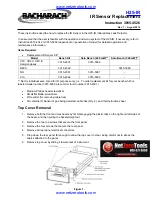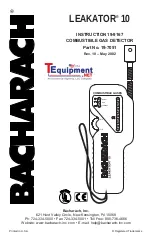
15
When performing maintenance on
Xgard
, ensure that the sensor retainer
and junction box lid Orings are present and in good condition to maintain
the ingress protection of the product. See the ‘Spare parts and
accessories’ section for the part numbers of replacement Orings.
3.3 Sensor replacement/servicing of detectors
Xgard
uses a modular design, which makes replacement of sensors
extremely simple. Replacement sensors are supplied fitted to a sensor
PCB to allow simple plugin installation. An exploded view of
Xgard
is
given in Diagram 3. The following procedure may be followed when
servicing a
Xgard
detector.
WARNING
This work should be carried out by Crowcon or an approved
service centre unless suitable training has been received.
1. Switch off and isolate power to the detector requiring attention.
2. Open the junction box of the detector by unscrewing the lid in an anti
clockwise direction (having loosened the retaining grubscrew first).
3. Unscrew the sensor retainer and remove the sensor and sensor PCB.
4. Fit the replacement sensor (having checked that the part number
matches that stated on the detector junction box label), taking care to
align the locating pins correctly with the slots in the junction box.
5. Refit the sensor retainer.
6. Follow the Commissioning Procedure given in 3.1.
Storage Instructions:
The sensor used in this detector has a maximum
nonpowered storage life of 3 months. Sensors stored within a detector
for longer than 3 months prior to commissioning may not last for the full
expected operational life. The warranty period for the sensor begins from
the date of shipment from Crowcon. Detectors should be stored in a cool
and dry environment where temperatures remain within the 020°C range.
Cleaning:
When cleaning Glassfilled Nylon junction boxes use a damp
rather than dry cloth to avoid building up static electricity.
3. Operation
Xgard Type 1
















































